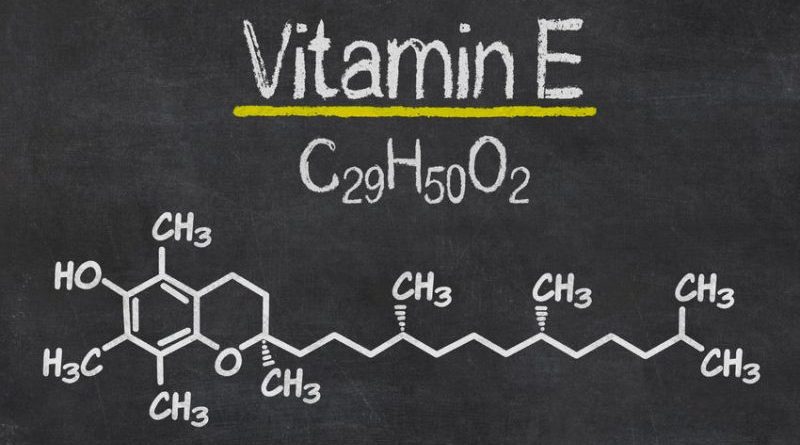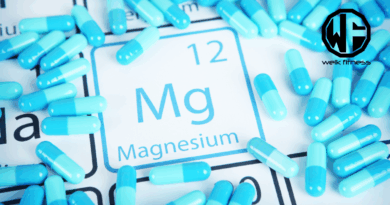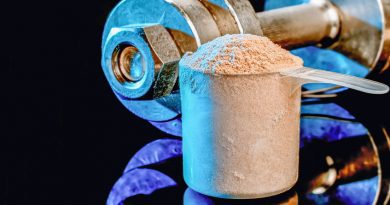Reduce Muscle Damage with Vitamin E?
If you’re serious about your training, you know that what you do outside the gym is just as important as what you do inside. You want to recover faster, feel less sore, reduce muscle damage, and get back to hitting it hard. That’s where the antioxidant powerhouse Vitamin E comes in.
In my decades as a certified strength coach and sports nutritionist, I’ve seen countless supplements come and go. Vitamin E, however, remains a key player for good reason. It’s a staple in many multivitamins because it helps protect your body from cellular damage, a process that training actually accelerates.
This guide will break down exactly how Vitamin E can help reduce muscle damage, support your recovery, and keep you performing at your best, backed by real science. We’ll explore why filling nutritional voids is so critical for achieving your fitness goals.
Disclaimer: This article is for informational purposes only and is not meant to treat or diagnose any condition. It is recommended that you speak with your doctor before starting any exercise program, changing your daily nutrition, or adding any supplements to your regimen.
Table of contents
Key Takeaways
- Antioxidant Power: Vitamin E is a fat-soluble antioxidant that protects your cells from oxidative stress, which is elevated during intense exercise.
- Reduces Damage Markers: Studies show Vitamin E, particularly at doses under 500 IU, can lower key markers of muscle damage like creatine kinase (CK) and lactate dehydrogenase (LDH) right after a workout.
- Food First Approach: You can get significant amounts of Vitamin E from foods like almonds, sunflower seeds, spinach, and avocados. The Recommended Dietary Allowance (RDA) for adults is 15 mg per day.
- Holistic Prevention: Vitamin E is one piece of the puzzle. Preventing muscle damage also requires a proper warm-up, gradual workout progression, and a diet rich in protein to support repair.
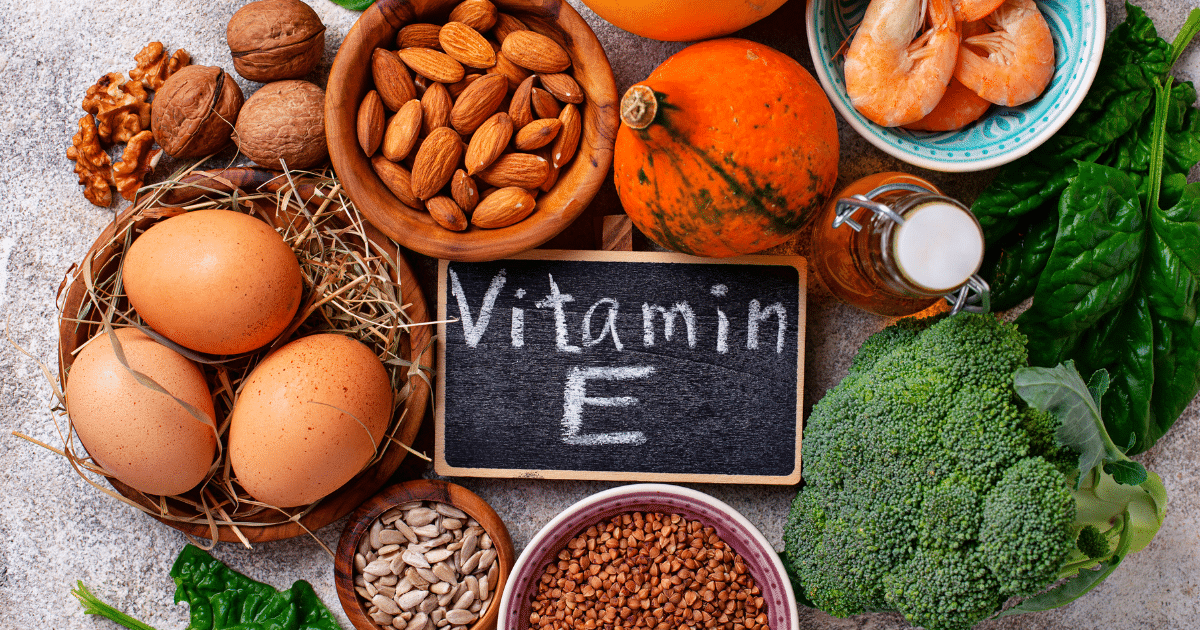
What is Vitamin E?
Vitamin E is a fat-soluble vitamin that acts as one of your body’s most important antioxidants. Think of it as your cellular bodyguard. During normal metabolism and especially during hard exercise, your body produces unstable molecules called free radicals. Vitamin E steps in to neutralize these free radicals, protecting your cells from damage, a process known as oxidative stress.
It exists in eight different forms, which are grouped into two categories: tocopherols and tocotrienols. Alpha-tocopherol is the most biologically active and common form found in supplements and used by the human body.
The Recommended Dietary Allowance (RDA) for adults is 15 milligrams (mg) per day. Most people can get this amount from a balanced diet. Excellent food sources include:
- Nuts and Seeds: A single ounce of almonds (about 23 nuts) provides around 7.3 mg, while sunflower seeds are also nutritional powerhouses.
- Vegetable Oils: Wheat germ oil is one of the richest sources, containing over 20 mg per tablespoon. Sunflower and safflower oils are also good choices.
- Leafy Greens and Vegetables: Spinach and broccoli contain Vitamin E, contributing to your daily intake.
- Fruits: Avocados and mangoes offer a healthy dose of this essential vitamin.
What is Muscle Damage?
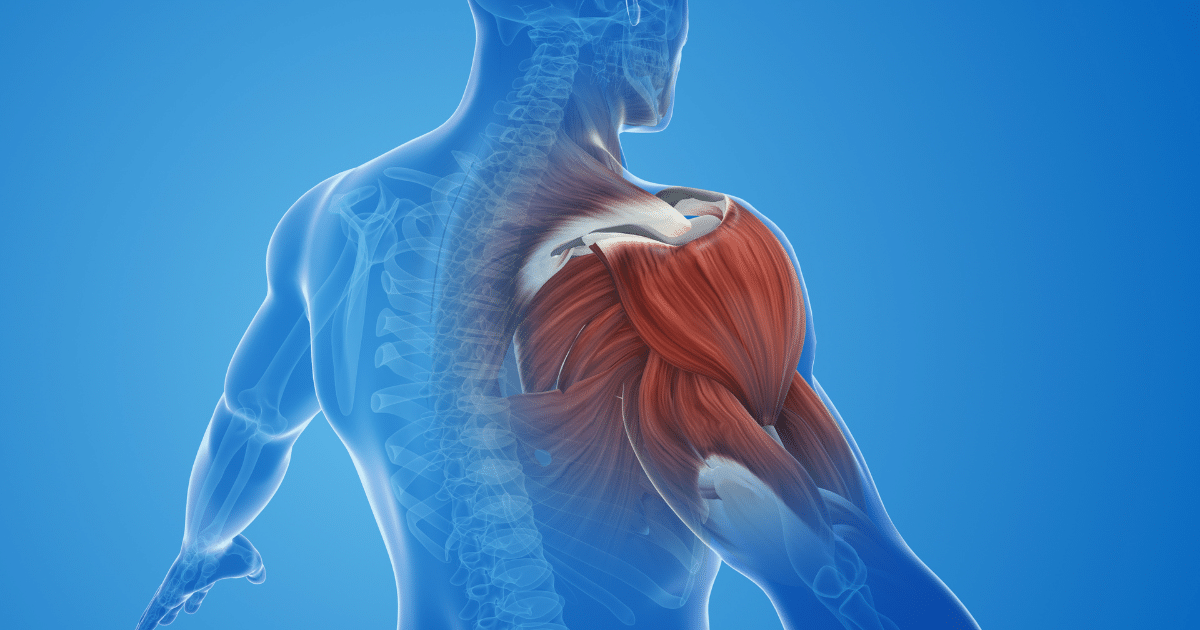
When you lift weights or perform intense exercise, you are creating microscopic tears in your muscle fibers. This is a normal process known as exercise-induced muscle damage (EIMD). This damage is the initial trigger for muscle growth and adaptation, so a certain amount is necessary to get stronger.
The most significant damage comes from eccentric contractions, which is the “negative” or lowering phase of an exercise. Think about slowly lowering a dumbbell during a bicep curl, that’s where the most micro-tears happen. This damage triggers an inflammatory response, leading to the familiar feeling of Delayed Onset Muscle Soreness (DOMS), which usually peaks 24 to 48 hours after your workout.
Scientists measure this muscle damage by looking for specific biomarkers in the blood that leak out of damaged muscle cells. The most common ones include:
- Creatine Kinase (CK): This is the gold standard for measuring muscle damage. Elevated CK levels are a direct indicator of muscle cell disruption.
- Myoglobin (Mb): This protein, found in muscle tissue, appears rapidly in the blood and urine after injury.
- Lactate Dehydrogenase (LDH): This enzyme is another common marker used to assess the extent of EIMD.
While this process is natural, excessive damage without proper recovery can lead to overtraining and injuries, sidelining your progress. This is why managing inflammation and supporting the repair process is so crucial.
How Do You Prevent Muscle Damage from Happening?
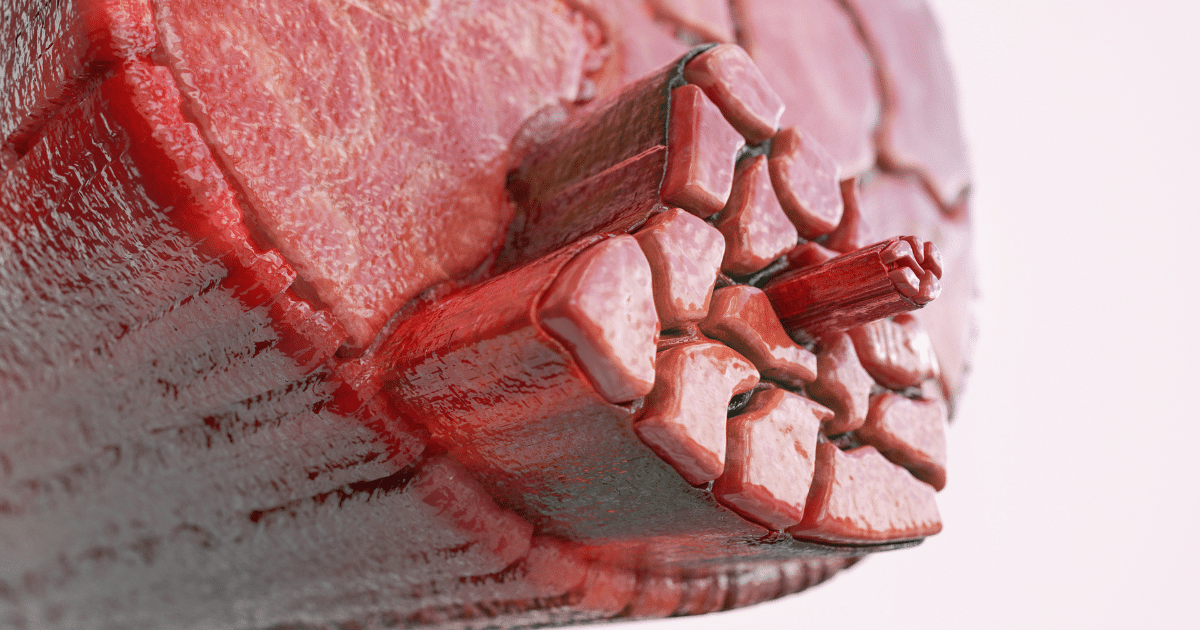
You can’t completely prevent muscle damage, nor would you want to, since it’s a catalyst for growth. However, you can absolutely minimize excessive damage and accelerate recovery. As a coach, I tell my clients that recovery starts the moment your workout ends. Here’s how to do it right:
- Fuel Properly with Protein: Protein provides the amino acids necessary to repair damaged muscle tissue. The International Society of Sports Nutrition recommends that exercising individuals consume 1.4 to 2.0 grams of protein per kilogram of body weight daily to support recovery and adaptation.
- Prioritize Smart Warm-Ups: A proper warm-up with dynamic stretching (like leg swings and arm circles) increases blood flow and prepares muscles for the stress to come, making them less susceptible to injury.
- Gradually Increase Intensity: Don’t jump into a new, high-intensity program overnight. Progressive overload is key. Allowing your muscles to adapt over time is one of the surest ways to prevent excessive soreness and injury.
- Embrace Active Recovery: On your rest days, light activity can be more beneficial than complete rest. Research shows that active recovery, like a gentle walk, swim, or yoga, increases blood flow to muscles, which can help flush out metabolic byproducts and reduce soreness.
- Hydrate Consistently: Dehydration can severely impact muscle function and your ability to recover. Make sure you’re drinking enough water before, during, and after your training sessions.
- Cool Down with Stretching: While its effect on DOMS is debated, post-workout static stretching helps improve flexibility and can aid in the relaxation of tense muscles, promoting blood circulation needed for repair.
Muscle Fiber Damage Study
The old research cited in health articles, like the study from The State University of Campinas in Brazil, often used animal models. While interesting, what truly matters for us are human results. Fortunately, modern research gives us a much clearer picture.
A 2022 meta-analysis published in the journal Nutrients provided some powerful insights. Researchers analyzed data from multiple randomized controlled trials to see if Vitamin E really helps with exercise-induced muscle damage in people.
The analysis showed that Vitamin E supplementation had a significant effect on reducing muscle damage markers, like creatine kinase (CK) and lactate dehydrogenase (LDH), immediately after exercise. This suggests Vitamin E helps protect muscle cell membranes during the stress of a workout.
Here’s what they found.
Interestingly, the dosage made a huge difference. The protective effects were clear with lower doses (defined as 500 IU or less per day), while higher doses showed no significant benefit for muscle damage. This is a perfect example of how more isn’t always better.
Related Article: The Health Benefits of Vitamin E Supplementation
The benefits also appeared to be more pronounced in trained athletes compared to non-athletes. This might be because athletes, who train regularly, have more robust antioxidant defense systems that Vitamin E can effectively support.
The takeaway from modern human research is that Vitamin E can be a useful tool for reducing the initial damage from a tough workout, especially for dedicated athletes. It works best at moderate doses, supporting the body’s natural antioxidant defenses without overwhelming them.
FAQs
How much Vitamin E should I take for muscle recovery?
The research suggests that doses of 500 IU or less per day are most effective for reducing markers of muscle damage. The RDA for adults is 15 mg (about 22.4 IU). It’s always best to start with a food-first approach and consult a healthcare professional before adding a high-dose supplement.
Can I get enough Vitamin E from food alone to reduce muscle damage?
Yes, most people can meet the 15 mg RDA through a balanced diet rich in nuts, seeds, vegetable oils, and leafy greens. For example, just one tablespoon of wheat germ oil or a couple of ounces of sunflower seeds can get you close to your daily goal.
Are there any risks to taking too much Vitamin E?
Yes. Vitamin E is a fat-soluble vitamin, which means excess amounts are stored in the body. The Tolerable Upper Intake Level (UL) is set at 1,000 mg (about 1,500 IU) per day. High doses, especially over 400 IU per day, have been linked to an increased risk of bleeding and may interfere with blood-thinning medications like warfarin.


*Disclosure: This article may contain affiliate links or ads, which means we earn a small commission at no extra cost to you if you make a purchase through these links. These commissions help support the operation and maintenance of our website, allowing us to continue producing free valuable content. Your support is genuinely appreciated, whether you choose to use our links or not. Thank you for being a part of our community and enjoying our content.
PLEASE CONSIDER SHARING THIS ON YOUR SOCIAL MEDIA TO HELP OTHERS LEARN MORE ABOUT THIS TOPIC.


